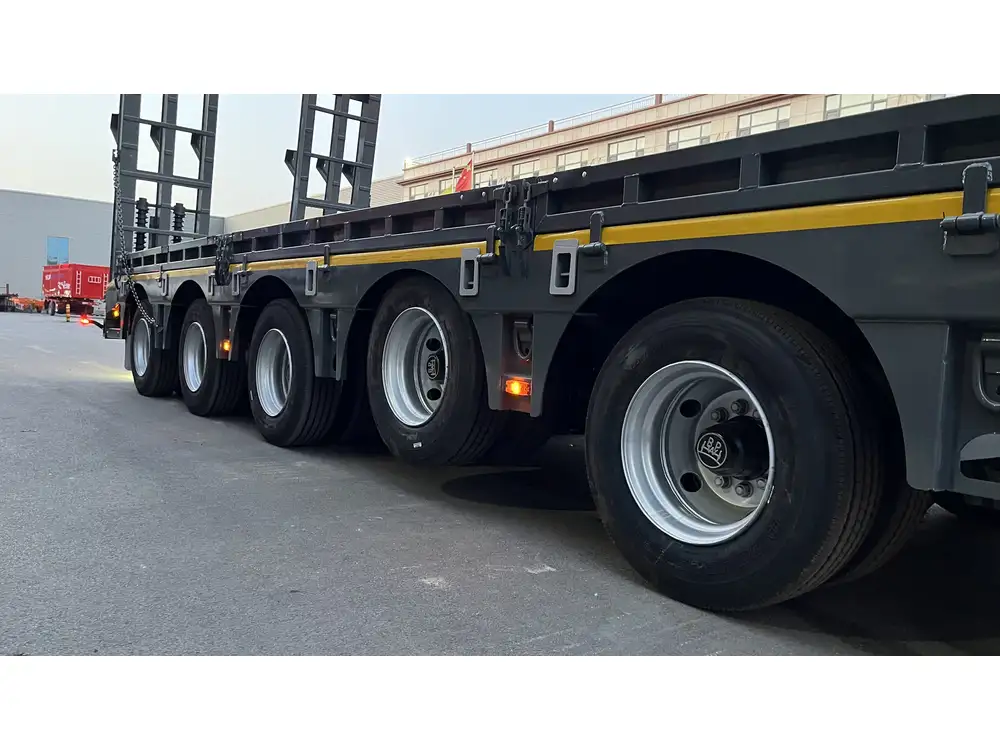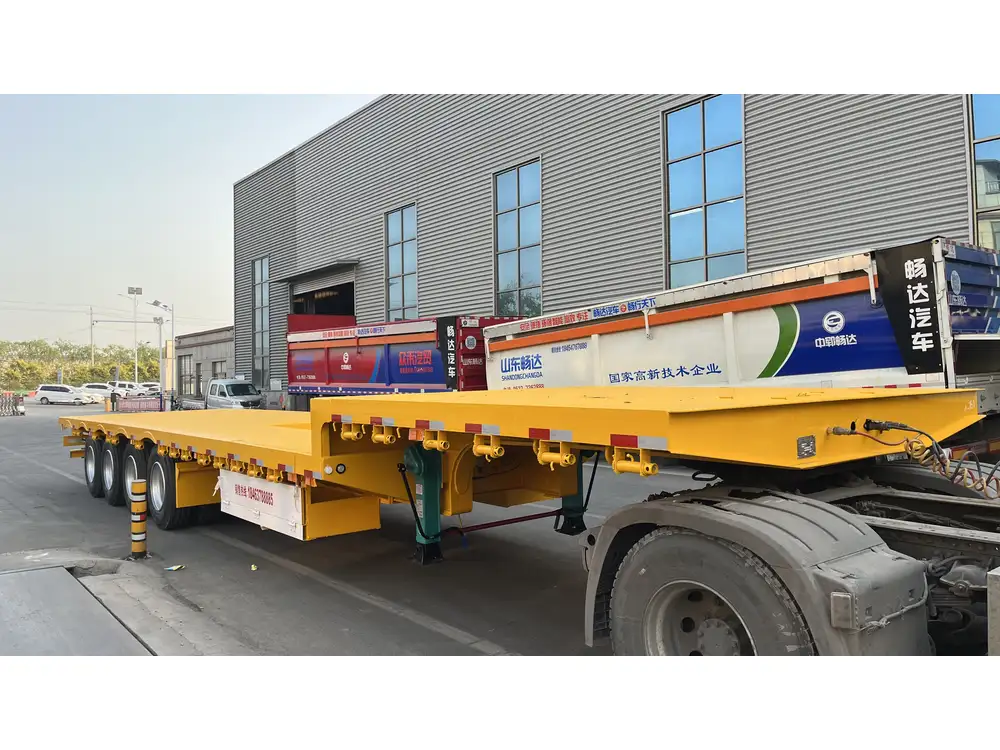What is a Side Kit for Flatbed Trailers?
A side kit for flatbed trailers is an essential accessory designed to enhance the functionality and versatility of flatbed vehicles. These kits enable the user to create side walls on a flatbed trailer, providing increased cargo security and protection against shifting loads during transportation. Primarily manufactured from durable materials, side kits may vary in design but typically serve a common purpose — to transform an open flatbed into a more enclosed space.
Key Components of a Side Kit
To appreciate the significance of a side kit, it’s crucial to understand its components. The principal elements include:
| Component | Description |
|---|---|
| Side Walls | Panels that attach to the sides of the flatbed, which can be fixed or removable. |
| End Panels | Panels that secure the back of the trailer, often referred to as rear end walls. |
| Fasteners and Brackets | Hardware used to secure the side and end panels to the flatbed. This may include bolts, screws, and brackets specifically designed for durability. |
| Tarps or Covers | Optional but highly recommended to provide weather resistance and further protection for the cargo. They can cover exposed sides and are essential during rain or snow. |

Benefits of Using Side Kits
1. Enhanced Cargo Security
Flatbed trailers, while versatile, expose cargo to potential damage and theft. Side kits mitigate these issues by enclosing the load. By providing solid barriers on the sides, a side kit substantially reduces the risk of cargo shifting or falling off during transit, thus reducing insurance liability and ensuring safer vehicular operation.
2. Increased Load Capacity
Using side kits can effectively increase the usable load capacity of a flatbed trailer. Enclosed sides allow for stacking materials higher than conventional flatbed limits. This increased vertical space makes it practical to transport larger quantities or bulkier items, such as construction materials or equipment.

3. Weather Protection
Rain, snow, and wind can wreak havoc on unprotected cargo. Side kits prevent adverse weather from damaging sensitive items. For businesses transporting goods that are susceptible to moisture or debris, investing in a side kit becomes essential to maintain cargo integrity throughout the journey.
4. Versatility in Application
Side kits are not solely useful for one type of cargo. They are adaptable for various applications, ranging from construction and landscaping to food and beverage transportation. Their customizable nature means that different industries can implement side kits according to their specific needs, accommodating diverse loads.
5. Compliance with Regulations
Certain types of cargo may have strict transport regulations regarding height and securing loads. A side kit can assist in compliance with such regulations, ensuring that loads are adequately contained and safe for public roadways.

Types of Side Kits Available
Not all side kits are created equal. Various types cater to different requirements based on the user’s needs and trailer model. Here are the most common types of side kits:
1. Removable vs. Permanent Side Kits
| Type | Description |
|---|---|
| Removable Side Kits | These kits offer flexibility; users can attach or detach the side panels as needed. This is particularly useful for businesses that may need their flatbed in an open configuration for specific jobs. |
| Permanent Side Kits | Fixed installations designed for continuous use. Organizations with a consistent need for secure transportation may opt for this style. They typically provide greater durability as they’re meant for long-term attachment. |
2. Material Options

a. Aluminum Side Kits
Aluminum provides a lightweight yet durable option, ideal for those who prioritize fuel efficiency. These kits resist corrosion, making them suitable for various environmental conditions.
b. Steel Side Kits
Heavy-duty and robust, steel kits offer maximum security and durability for transporting heavy loads. However, they can be significantly heavier than aluminum options, potentially impacting fuel consumption.
c. Composite Materials
Progressive manufacturers are increasingly offering composite material side kits that blend lightweight fiberglass or plastic with steel reinforcement, combining benefits such as low weight and resistance to environmental degradation.

Installing a Side Kit: Step-by-Step Guide
Installing a side kit is a process that can be DIY for those comfortable with basic tools or can require professional help for larger builds. Here’s a brief guide to the installation:
Tools Required
- Socket set or wrenches
- Screwdriver
- Drill with bits specific to trailer material
- Tape measure
- Level
Installation Steps
Preparation: Clean the flatbed surface of any debris and ensure it is dry. This will improve adherence for any fasteners.
Position the Panels: Lay out the side panels and end panels ensuring they align correctly with the edges of the flatbed. Use a level to confirm straightness.
Secure First Panel: Attach one side panel to the flatbed using the provided brackets and fasteners. Ensure it is tightly secured, as this will provide a sturdy starting point for attaching the rest.
Attach Remaining Panels: Continue securing the remaining side panels adjacent to the first. Follow the same process to attach end panels at the back. Check alignment consistently.
Final Checks: Once all panels are in place, conduct a thorough inspection of connections, ensuring all screws and brackets are tightly fastened.
Optional: Tarp Installation: If using tarps, attach them using the designated hooks or loops to secure them against the elements effectively.

Maintenance of Side Kits: Ensuring Longevity
Just like any equipment, side kits require routine maintenance to ensure longevity and usability. Regular inspections should focus on:
- Fastener Integrity: Regularly check for loose screws or brackets that may need tightening.
- Material Condition: Inspect the panels for signs of wear or damage due to environmental exposure.
- Weatherproofing: Ensure any seals or tarps used remain intact and effective in protecting cargo.
Conclusion
Investing in a side kit for a flatbed trailer is much more than a mere enhancement; it’s a strategic decision that can significantly amplify operational efficiency, safety, and cargo security. By understanding the various types, benefits, installation practices, and maintenance needs, users can maximize their flatbed trailers’ potential. Whether users are engaged in construction, logistics, or delivery services, the adaptability and advantages of side kits cannot be ignored. Ultimately, choosing the right side kit can transform a simple flatbed into a highly versatile transport solution.



